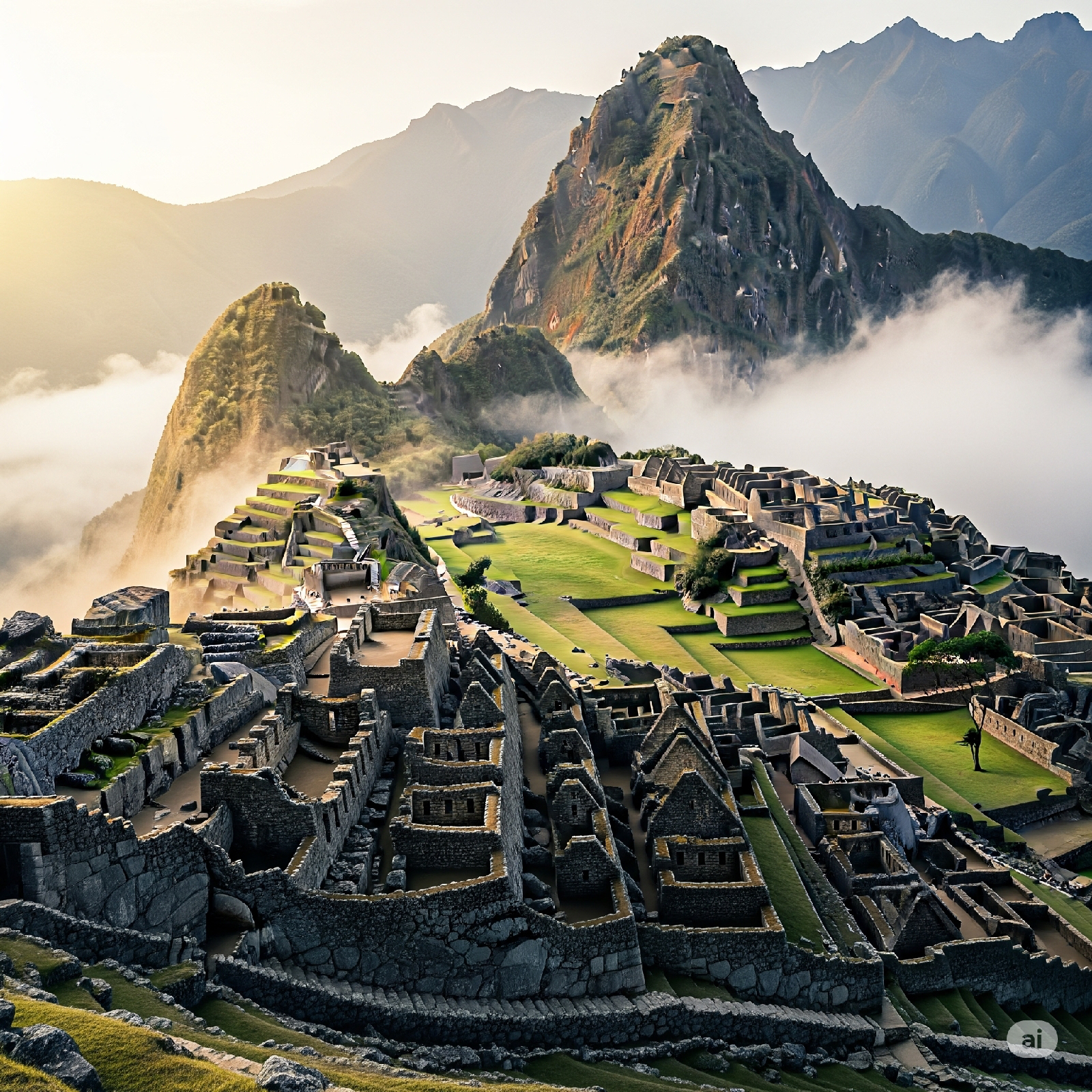Machu Picchu is far more than just a beautiful ancient ruin; it's a testament to the ingenuity, spiritual depth, and architectural prowess of the Inca civilization. Here are its unique and defining details:
1. Seismic-Resistant Architecture: The Ashlar Mastery
* Earthquake Resilience: Located between two major fault lines in a highly seismic region, Machu Picchu stands as a marvel of earthquake-resistant engineering. The Incas employed a technique called ashlar masonry, where precisely cut and polished stones are fitted together so tightly without mortar that not even a knife blade can pass between them.
* Ingenious Design: This precision allows the stones to "dance" or shift slightly during an earthquake, and then settle back into place without collapsing. This is evident even in subtle ways, like the use of trapezoidal doorways, windows, and niches, which offer greater stability than rectangular ones during seismic activity.
* Cyclopean Masonry: In some areas, they also utilized "cyclopean masonry," fitting together massive, irregularly shaped stones, further showcasing their mastery of stone construction.
2. The Chakana (Inca Cross): A Cosmic Symbol
* Three Realms: The Chakana, or Inca Cross, is a stepped cross with a circular center, representing the three realms of Incan cosmology:
* Hanan Pacha: The upper world (heavens, gods)
* Kay Pacha: The middle world (earth, human life)
* Ukhu Pacha: The underworld (ancestors, fertility)
* Integration with Nature: At Machu Picchu, the Chakana is subtly integrated into the landscape, particularly in the Temple of the Condor, where natural rock formations and their shadows ingeniously complete the symbol, highlighting the Inca's deep connection to their environment and celestial observations.
3. Advanced Water Management System:
* Self-Sufficient City: Despite its high mountain location, Machu Picchu had an intricate and highly efficient water system. The Incas engineered a network of canals and aqueducts that brought fresh water from natural springs and glacial melt, channeling it throughout the city to fountains and terraces.
* Drainage Masterpiece: Crucially, they also implemented innovative underground drainage systems within their agricultural terraces. This prevented erosion and landslides, even with the significant annual rainfall (over 1,800 mm or 71 inches), showcasing their understanding of hydrology and sustainable agriculture.
4. Agricultural Terraces (Andenes): A Feat of Engineering and Sustainability:
* Slope Utilization: The hundreds of man-made terraces (andenes) are not merely steps for farming; they are sophisticated engineering marvels designed to maximize agricultural output on steep slopes.
* Layered Construction: These terraces were built in layers, with larger stones at the bottom for drainage, covered by gravel, sand, and then fertile topsoil. This ingenious design ensured good drainage, soil fertility, and prevented erosion, demonstrating advanced ecological awareness.
5. Mysterious Purpose and Abandonment:
* Royal Estate or Sacred Site? While commonly believed to be a royal estate or retreat for the Inca Emperor Pachacuti (built around the mid-15th century), its exact purpose remains a subject of ongoing debate. Other theories suggest it was a religious sanctuary, an astronomical observatory, a ceremonial center, or even a center for studying new crops.
* "Lost City" and Abandonment: Machu Picchu was never truly "lost" to local communities, but its existence remained unknown to the Spanish conquistadors, preserving it from their destruction. The reason for its abandonment around 1530 AD, shortly after the Spanish conquest, is also unknown, though lack of water or a sudden depopulation due to disease or other factors are often speculated.
6. No Use of Wheels, Iron Tools, or Pack Animals for Construction:
* Unfathomable Labor: The construction of Machu Picchu is even more astonishing given that the Incas did not use wheels, iron tools, or large pack animals (like oxen or horses, which were not native to the Americas) to transport and manipulate the enormous stones. It's estimated that thousands of people, using only manpower and simple tools, moved stones weighing up to 50 tons up steep slopes.
7. Astronomical Alignments:
* Cosmic Connection: Many structures at Machu Picchu, particularly the Intihuatana stone (meaning "Hitching Post of the Sun") and the Temple of the Sun, are precisely aligned with significant astronomical events, such as solstices and equinoxes. This indicates their deep understanding of celestial movements and their integration into religious and agricultural practices.
8. Unique Location and Layout:
* Natural Fortress: Perched on a narrow saddle between two sharp peaks—Machu Picchu ("Old Peak") and Huayna Picchu ("New Peak")—at an elevation of 2,430 meters (7,970 ft) above the Urubamba River valley, its strategic and secluded location contributed to its preservation.
* Harmonious Integration: The city's layout perfectly follows the contours of the mountain, blending seamlessly with the natural landscape. Walkways and thousands of stone steps connect plazas, residential areas, temples, and agricultural zones.
9. Rediscovery by Hiram Bingham:
* Bringing it to the World: While known to local peasants, American archaeologist Hiram Bingham is credited with bringing Machu Picchu to international attention in 1911, while searching for the last Inca stronghold of Vilcabamba. His "discovery" sparked global interest and initiated extensive research and conservation efforts.
10. UNESCO World Heritage Site:
* Global Significance: Declared a UNESCO World Heritage site in 1983, Machu Picchu is recognized for its outstanding universal value, encompassing both its cultural significance as a masterpiece of Inca architecture and engineering, and its natural beauty within a diverse ecosystem (Machu Picchu Historic Sanctuary).
Machu Picchu is a complex and captivating site that continues to reveal secrets about the advanced civilization that built it, offering a profound glimpse into their worldview, technological capabilities, and deep respect for nature.

Comments
Post a Comment